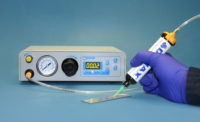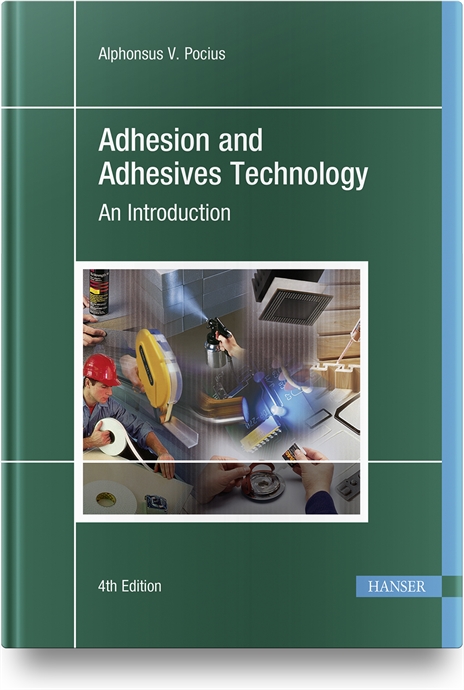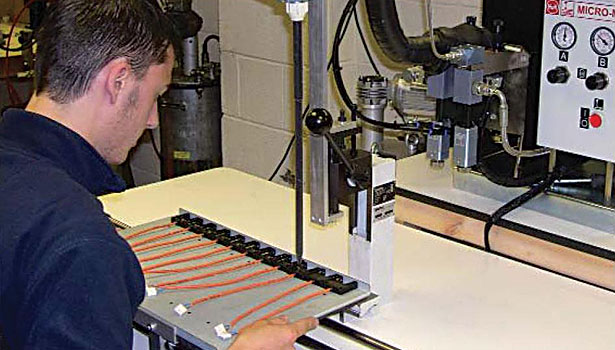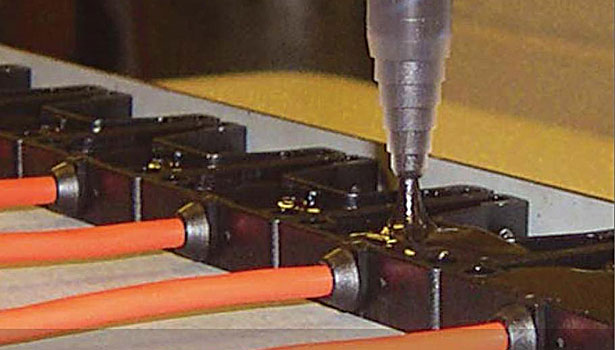Development of Textile-Equipment Sensor is a Good Yarn

Dent Instrumentation Ltd. produces more than 3,000 transmissive sensors every day.
Photo courtesy DOPAG (UK) Ltd.

A static mixing system, the Micro-Mix E dispenses two-component epoxy into a rugged alloy housing to encapsulate a sensor.
Photo courtesy DOPAG (UK) Ltd.


Archeologists have discovered fabric fragments that date back to around 5,000 BC. Even more interesting, the fragments indicate that fabric then was woven from yarn using techniques similar to those used today.
The one difference between then and now is technology, which enables textile manufacturers to produce large amounts of yarn at very high volumes. Dent Instrumentation Ltd., based in Lancashire, England, provides specialized sensors to textile manufacturers so they can detect any breakages in yarn during production.
Several of Dent’s customers need to detect traversing or straight-line-running yarns on weaving, spinning and twisting machines. This led Dent to develop a small, low-cost transmissive sensor specifically for such machines. Chris Duckett, production director for Dent, says the company produces more than 3,000 sensors every day.
The transmissive sensor outputs a signal when the yarn moves in an optically aligned beam. This signal activates the cutter or PLC input. A built-in compensation feature ensures that the signal is unaffected by dirt, grease, oil or fly (short waste fibers).
During the development process, Dent managers decided to place the sensor in a rugged alloy housing for protection. The managers also decided to encapsulate the sensor with a two-component epoxy resin having a mixing ratio of 100-to-32 by volume.
Next, they consulted with DOPAG (UK) Ltd. about the best equipment to meter, mix and dispense the resin. DOPAG has supplied Dent with metering systems for more than 20 years.
Dent managers chose DOPAG’s Micro-Mix E system.
A static mixing system, the Micro-Mix E features two single-acting piston pumps driven by a pneumatic motor. The sys-tem has an infinitely variable mixing ratio between 100-to-100 and 100-to-20 (by volume) and a maximum shot size of 5 milliliters. It can handle materials having a viscosity from 50 to 1 million millipascal-seconds.
Separate pressure vessels supply the A and B resin components to the piston pumps, which meter the material at a preselected ratio. Mix ratio and shot size can be adjusted using a lever system. Pulse frequency and working pressure can be adjusted through a pneumatic control system.
During production, one shot of resin is dispensed into the sensor housing and allowed to settle. This ensures that com-plete encapsulation occurs and no air is trapped in the mixture. After the first shot is cured, the second shot is dispensed and allowed to cure.
For more information on metering systems, call 513-881-6370 or visit www.dopag.com.
Looking for a reprint of this article?
From high-res PDFs to custom plaques, order your copy today!







